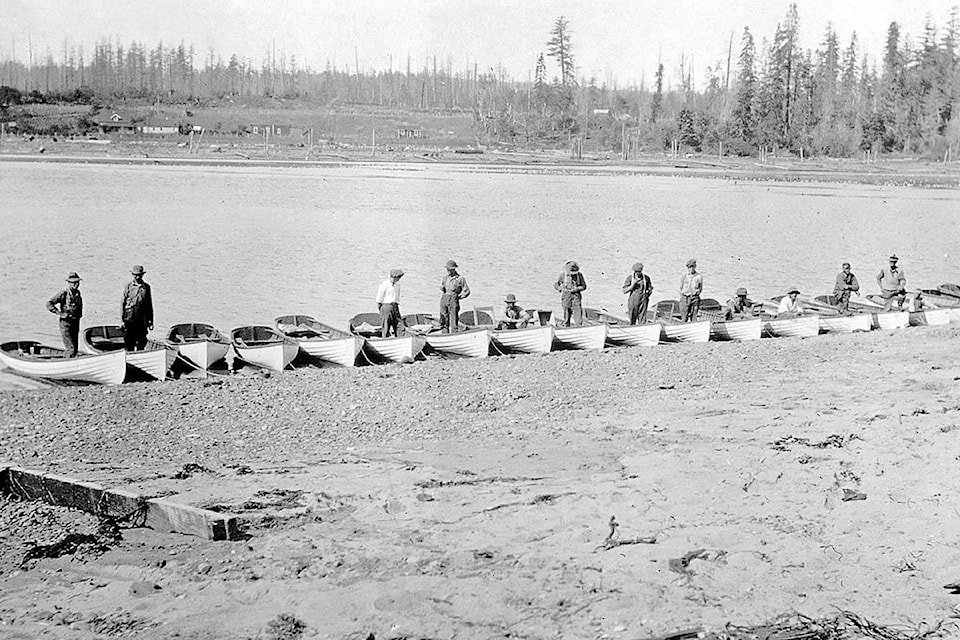By Erika Anderson
A staple of the Campbell River tourism sector, to this day Tyee fishing in Campbell River was a sought-after experience, even before 1924 when the Tyee Club of British Columbia was established.
Tyee fishing is a partnership between the guide and fisherman. The yearbook for the Tyee Club for 1927-1928 describes their guides: “No finer type of guide for fishing exists in any place in the world than we have in the Tyee Club. They are big, square, outdoor, grown-up boys, and they take as much pleasure in their part of the game as we do ourselves.”
Over the years the description in the yearbook changed, and by the ‘50s the guides were no longer described as big, square, grown-up boys: but the part about enjoying their jobs never changed.
The Seattle Times from June 14, 1964 looks back at the early Tyee guides.
“He was a special breed of man, hale and hearty. He knew every inch of water for miles around. He knew where the big fish were and the best tackle to take them. He could row for 14 to 16 hours at a stretch. He knew how to ‘hook’ into a salmon. He could bring it to gaff quickly. Above all he was a diplomat.” It then continues, “A good guide assured an angler of a Tyee, and they were much sought after. There were 15 full-time guides at Campbell River in the 1920s and during the July-August Tyee months, they were worth their weight in gold.”
Few worked full time as fishing guides. They pursued a variety of trades, with some working in other seasons as hunting guides, such as famous Tyee guides Cecil Smith and Herbert Pidcock. In the early years it was common for guides to be working in resource industries such as logging, mining and commercial fishing.
In his book Tyee: The Story of the Tyee Club, Van Egan explains that often these men would take holidays during the Tyee season to work as guides for a few weeks or a month.
According to Statistics Canada, the average man made $950 per year in 1931, which averages $2.61 per day. Although the wages fluctuated greatly at the time, Tyee guiding paid better than many of the other jobs these men were working, and was without a doubt more enjoyable.
In some cases they would have commercial fishing licenses, which allowed them to sell fish, adding an extra stream of income in cases where clients gave the fish to their guide.
In later years, many Tyee guides were university students, working only for a few short summers to pay their way through school, and teachers looking to supplement their income in the lean summer months when school was out.
The August 20, 1931 edition of the Comox Argus discusses how guiding for Tyee salmon helped keep Campbell River’s economy afloat during logging shut downs in the summer.
“Now that logging is closed down at Campbell River ‘till the fire season is over, the chief industry is the Tyee fishing. On one day last week there were 20 guides out of the mouth of Campbell River pulling boats at the rate of 10 dollars a day. The big fish have not begun to run yet and when the news gets abroad that they are biting, the influx will be greater yet. International importance has been given to the fishing at Campbell River and people of means come from all over the world to get a big fish and incidentally add very considerably to the revenue of people who are in business at this point.”
Some days the fish didn’t bite, but the mutual respect and friendship that developed between fisherman and guide could ensure a good day on the water regardless. “If the guide has a few good stories there was never a bad day on the water,” explains Tyee fisherman and guide of 35 years, Norm Lee.
